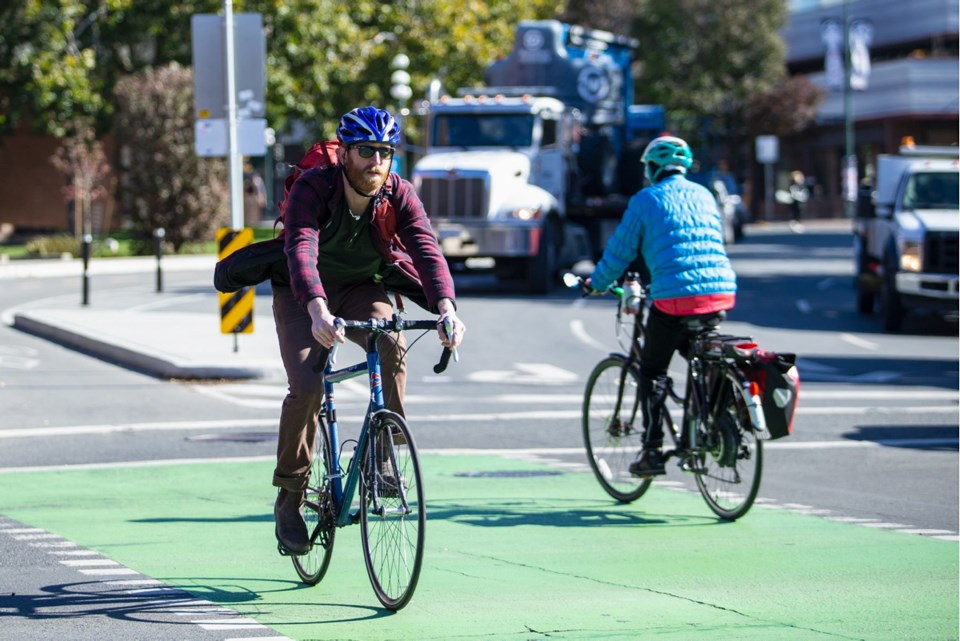Victoria’s first separated bike lane recently marked its one millionth reported trip and everyone on the road — motorists, pedestrians and cyclists — is safer for it, says the president of the Greater Victoria Cycling Coalition.
Since opening in May 2017, the separated bike lane on Pandora Avenue from Cook Street to Store Street has averaged more than 1,100 daily trips and more than 35,000 trips per month.
The two-way lane on the north side of the street is separated from car traffic by physical barriers.
Edward Pullman, president of the cycling coalition, said the infrastructure improves safety for all road users. With the separated bike lanes, traffic lights operate differently, giving cyclists and pedestrians a chance to travel through intersections while cars have a red light for right turns.
“It makes for a better pedestrian experience and it makes for a better motorist experience, too,” Pullman said. “If you have a particularly high volume of pedestrian traffic, that traffic will now clear and you’ll have your own separate phase to turn.”
The separated lane on Pandora Avenue was followed by similar lanes on Fort, Wharf and Humboldt streets.
“This is a significant mobility milestone for our city and demonstrates why our cycling network is so important. Simply put, people want to use it,” said Mayor Lisa Helps.
The lanes are part of the city’s plans to complete a 32-kilometre network of All Ages and Abilities bike lanes that will connect the downtown core to neighbourhoods and regional trails.
Pullman expects to see a noticeable increase in the number of cyclists on the roads once the full network is complete.
“We’ve certainly seen increases, but until you can walk out of your house, get on your bike and within a few hundred metres be on a AAA bike facility that can get you around town easily — it’s only when we hit that, that we’ll see significant increases in ridership,” Pullman said.
Bike lanes are often the target of complaints about congestion, longer car commutes and lack of parking, with businesses worried customers will stay away if they can’t find parking nearby.
Thirty-four street-parking spots were removed from Pandora Avenue between Cook and Store streets to accommodate the separated bike lane, accounting for about 30 per cent of street parking previously on the street.
Rachael Dayman, an esthetician at Milk and Honey Brow Bar on Pandora Avenue, said customers often complain that parking is difficult to find, but she hasn’t noticed an impact on business since the bike lanes went in.
Representatives of several other businesses on the street agreed that the lanes haven’t put a dent in the number of people coming through their doors, and are enthusiastic about the infrastructure.
Abbey Riddell, co-owner of Vintage after Death, said the bike parking outside her store is usually full and she often has to look on a nearby street for space to lock her bike.
Riddell has watched road users learn to navigate the lanes.
“With the door open, we would hear arguments between cars and pedestrians and that kind of stuff, but I’ve really noticed that everyone’s kind of jumped on board, and they kind of understand how the no turn on red light works,” Riddell said. “A year later, I’d say the lanes are busier, things are flowing a lot smoother and — just using the lanes myself — people are using the lanes more.”
One thing that has changed since the bike lanes opened is the number of cars on Pandora each day.
Car traffic on the street has dropped by about 4,000 vehicles per day, from roughly 13,000 daily car trips in 2010 to 9,000 today, according to data from the city.
regan[email protected]



